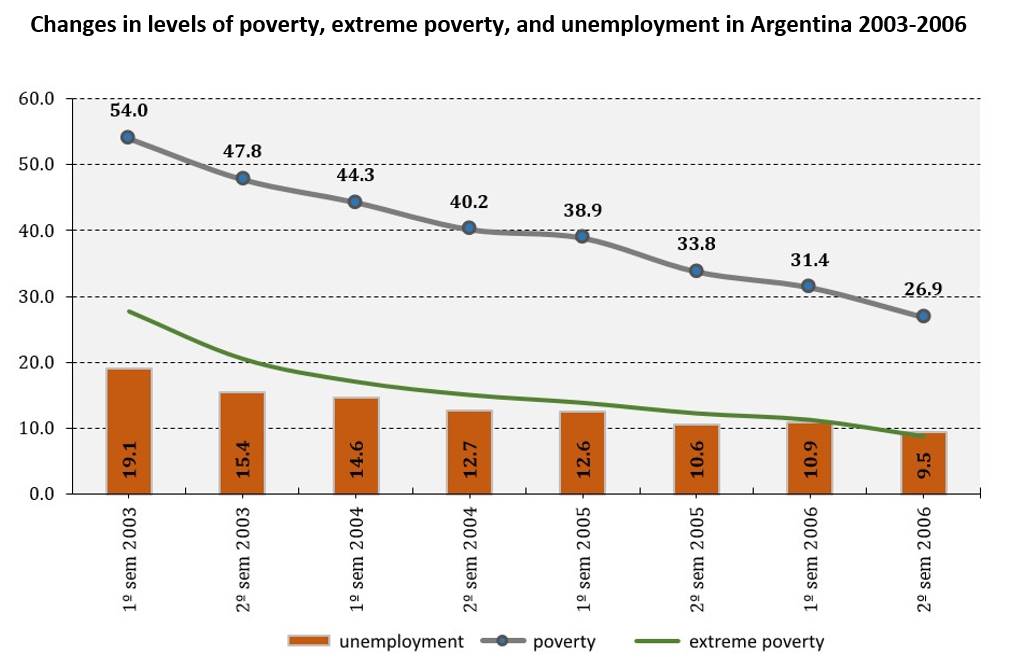 In Argentina as elsewhere, national statistics have recently become as issue of public debate. Former director of the National Statistics and Census Institute (INDEC), Norberto Itzcovich, analyses how inflation and poverty have been measured since the 1990s, arguing that statistics must evolve in line with policies, whereas neutrality is a chimera.
In Argentina as elsewhere, national statistics have recently become as issue of public debate. Former director of the National Statistics and Census Institute (INDEC), Norberto Itzcovich, analyses how inflation and poverty have been measured since the 1990s, arguing that statistics must evolve in line with policies, whereas neutrality is a chimera.
• Disponible también en español
Between 2007 and 2015 the National Institute of Statistics and Censuses was subjected to an ongoing attempt to undermine its credibility, more as a result of political and economic issues than methodological or operational shortcomings. This situation contradicts the Statistical Organisation Manual of the United Nations, which states that the independence of statistical organisations is an essential condition in establishing credibility. But can this ideal of statistical independence really be achieved?
Defining independence
The first step is to define at what level that independence ought to apply. By virtue of experience and knowledge, the chief statistical officer of a given country will obviously have a decisive influence on the forms and methods of measurement of each statistic. But is the person who carries out this role the best-placed to decide which statistics should be formulated?
If we accept the idea that statistics are essential for the government and the public to assess the performance of government policies, it would seem appropriate that the decision regarding which variables to measure should not lie (at least not exclusively) with the head of the statistics office.
For example, if the government of a country decides to implement an active public works policy which will have a direct impact on the living conditions of its citizens, in terms of drinking water networks, sewage disposal systems or primary health care, the national statistics office would be expected to assess the impact of these policies on the public. It would also be logical for the political authorities to give instructions to the head of the statistics office on this point. It is then the responsibility of the latter to decide the best way of monitoring this impact, as well as how precisely it needs to be measured.
If the decision to measure or not were the sole responsibility of the statistical office, as suggested in the United Nations statistical manual, then its role would acquire a political dimension which it had not explicitly sought.
As such, the idea of ‘statistical neutrality’ does not operate in the manner proposed by the UN. It would otherwise be impossible to explain how in almost every country the direction of the national statistical agency is renewed with every change of government.

Measurement of inflation and poverty in Argentina during the 1990s
For most of the nineties in Argentina the value of the peso was pegged to the dollar under a currency board system, and from 1996 onwards inflation was measured using a consumer price index for the Greater Buenos Aires area (CPI-GBA) which included imported products, thereby ensuring a lesser degree of price variation. The index which was finally published from 1999 onwards (IPC-GBA base in 1999=100) included jam, flowers, items of clothing and even trips abroad, all of which were denominated in dollars, thus guaranteeing price stability thanks to the implementation of the currency board system. This is just one example of how the methodological definition of a given statistic is not neutral.
As for poverty, despite the existence of a number of theoretical approaches, studies on poverty in South America have focused almost exclusively on a single aspect: income.
In Argentina, the decision to measure poverty in terms of lack of income was made in 1993. This decision was influenced by the general political framework of the time, with a tendency during the 1990s (in Argentina and the wider region) away from state involvement in the economy and in social policy.
Without debating the consequences of this model, the measurement of poverty according to income (the poverty line) undoubtedly proved useful in enabling this tendency to continue. If the state opted to reduce or discontinue investment in infrastructure, the measurement of the impact of these policies on living standards was no longer desirable. Again, in political terms the definition of a statistical methodology was anything but neutral.
INDEC under Nestor Kirchner and Cristina Fernández de Kirchner (2007-2015)
Returning to the case of INDEC, from 2007 onwards the Consumer Price Index and poverty were the main focus of scrutiny.
Concerning the CPI, it should be stated that doubts became more firmly established once it ceased to be merely descriptive, as it is in most countries, and began to be used to calculate yields on bonds issued by the national government. In other words, the CPI became a variable linked to profitability for the national and international economic system from 2006 onwards. Apart from the methodological issues which have been described here, the production of the CPE, in the daily tasks of data collection, monitoring and analysis, was carried out with clear signs of a marked upward trend.
In 2008 INDEC adjusted the methodology used to produce the CPI, adapting it to internationally accepted standards. Then in January 2014 a new CPI was drawn up, based on a new survey of household spending which sought to represent the population as a whole.
As for poverty, between 2007 and the first quarter of 2013 INDEC continued to publish data on both poverty and extreme poverty. Despite being called into question, these were entirely consistent with the measurements of the World Bank and CEPAL (Economic Commission for Latin America and the Caribbean).
 They were also consistent with other macroeconomic variables. Between 2003 and 2006, for instance, poverty fell by 27.1%, along with a fall in unemployment of 9.6% (see chart above).
They were also consistent with other macroeconomic variables. Between 2003 and 2006, for instance, poverty fell by 27.1%, along with a fall in unemployment of 9.6% (see chart above).
This in mind, it is entirely logical that between the second quarter of 2006 and the first quarter of 2013 (the last measurement published prior to December 2015) poverty could fall to 4.7% (chart below): there was a continual decrease in unemployment, policies increased welfare-beneficiary numbers (over 3 million new pensioners and over 4 million recipients of the Universal Child Allowance, amongst many others), as well as a permanent improvement in real-terms income. All of this had a marked impact on patterns of private consumption.

Essentially, from 2007 to 2015 the statistical authority did no more with the CPI than adjust the methodology according to the prevailing situation in the country, while fully complying with international methodological guidelines. In the case of poverty, on the other hand, it is clear that, despite the doubts expressed, the results up to the first quarter of 2013 were consistent both in terms of international comparisons and the prevailing macroeconomic framework.
INDEC under Mauricio Macri (2016)
Since President Macri came to power in December 2015 the field of statistics has gone into reverse. First, for six months between November 2015 and April 2016 the country did not have a CPI, and when one was published in May 2016 it only covered the area of Greater Buenos Aires rather than the whole country. In addition, it was based on a household prices survey from 2004, making it over twelve years old.
Publication of poverty figures resumed in the second quarter of 2016, but only with methodological changes which make it impossible to compare with figures from previous years. There was also an intention, it would seem, to ignore the positive results previously achieved in the field of social policy.
Finally, as a result of a recent decree signed by the President, INDEC is no longer able to estimate the country’s balance of payments, which severely affects its role as coordinator of the national statistical system.
INDEC, scientific rigour, and local realities
Absolute neutrality in statistics does not exist anywhere in the world. Once the statistical plan has been formulated – that is, the variables to be measured have been identified – it is essential in formulating indicators not only to apply scientific rigour according to international parameters but also to consider local realities. This is precisely what we did at INDEC between 2007 and 2015.
Notes:
• The views expressed here are of the authors and do not reflect the position of the Centre or of the LSE
• Feature-image credit: Alex Proimos (CC BY-NC 2.0)
 Norberto Itzcovich – Former Director of INDEC
Norberto Itzcovich – Former Director of INDEC
Norberto Itzcovich had a long career at Argentina’s National Statistics and Census Institute (1992-2015), eventually becoming Technical Director (2009-14) and Director (2014-15). He was a member of the academic council of the Master’s programme in Survey Design, Management, and Analysis at Universidad Nacional de La Matanza until late 2015.





